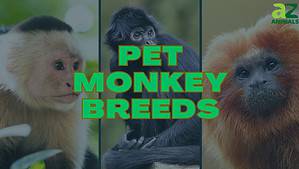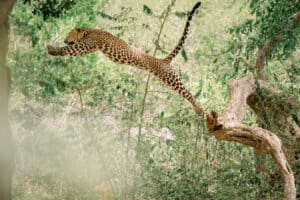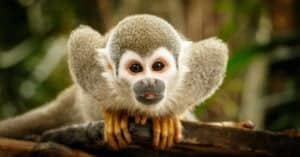It’s an interesting question. Do monkeys have chins? And the answer, in short, is no. They don’t have chins. Humans are the only primates, or animals for that matter, that have chins. So you may be asking yourself why it looks like some monkey species might have chins. Well, there is an interesting answer to this question. Follow as we look at all aspects of chins or, in this case, the absence of chins in monkeys.
What Exactly is a Chin?
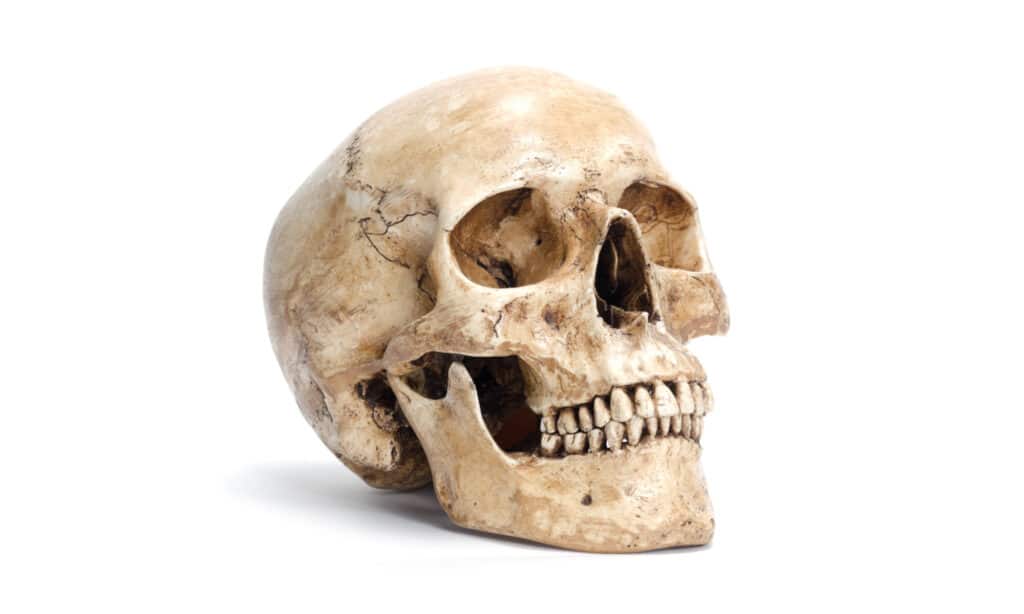
Do monkeys have chins like people? The chin is a protrusion of the lower jaw only humans possess.
©Chokniti Khongchum/Shutterstock.com
A chin is a protrusion of the lower jawbone, typically described as the area below the lower lip. The word “chin” can also refer to the entire lower jawbone, which includes the chin. The term “chin” comes from the Old English word “chinning,” which means “projecting point or promontory.”
- The mental protuberance is the most anterior part of the chin. It is a small, rounded part that projects from the lower jaw.
- The mandibular symphysis is the central part of the chin. It is a flat, triangular area where the left and right halves of the lower jaw meet in the middle.
- The genioglossus muscle is a small, triangular muscle that attaches to the chin and tongue.
- Finally, the mentum is the posterior part of the chin. It is a large, rectangular area that projects from the lower jaw.
The chin is an important facial feature that plays a role in the overall appearance of the human face. It can determine the face’s symmetry and affect how light reflects off the face.
How Does a Monkey’s Lower Jaw Structure Differ From a Humans?
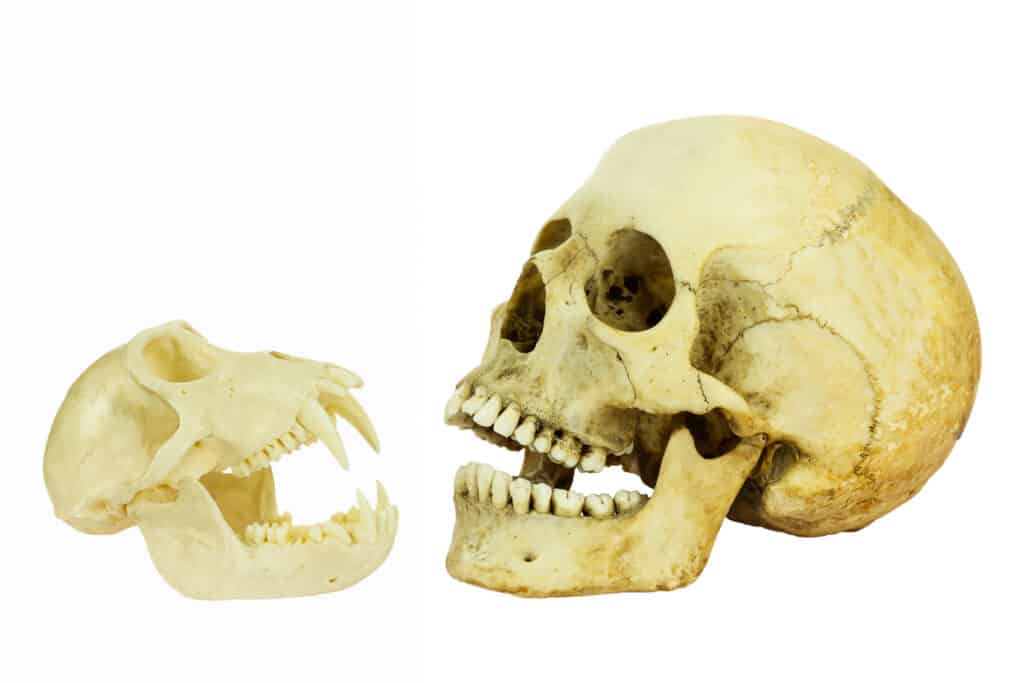
A monkey’s lower jaw slopes away from the teeth compared to a person’s jaw, which protrudes.
©Ben Schonewille/Shutterstock.com
One of the most distinct differences between a monkey’s lower jaw and human’s is the size. A monkey’s lower jaw is much smaller than the rest of its head, while a human’s lower jaw is more in proportion with the rest of the face. The shape of a monkey’s lower jaw also differs from that of a human.
A monkey’s lower jaw slopes down at a much more dramatic angle. It slopes down and back from their front teeth while the human’s jaw juts forward. Finally, a monkey’s lower jaw’s purpose differs from a human’s. A monkey primarily uses its lower jaw to eat, while a human uses it to eat and speak.
While there are some similarities between a monkey’s lower jaw and a human’s, the differences are much more pronounced. Size, shape, and purpose vary widely, making the lower jaw a key distinguishing factor between monkeys and humans.
If We Are All Primates, Why Do Humans Have Chins but Monkeys Don’t?
It’s a question that has puzzled biologists for years: if we are all primates, why do humans have chins, but monkeys don’t? A simple answer might be that monkeys don’t have chins because they don’t need them. Unlike humans, monkeys don’t need to chew their food as thoroughly before swallowing it. So, they don’t need the extra support that a chin provides.
But Why Do We Need Chins?
The chin is a relatively recent addition to the human face. Our early ancestors didn’t have chins, but around 200,000 years ago, our skulls started to change. The lower jaw became shorter, and the chin protruded further forward.
A change in the diet probably caused this change. Our ancestors started to eat more tough and fibrous foods, like vegetables and meat. This change required more chewing, putting new stress on the lower jaw. As a result, the lower jaw became shorter to cope with these stresses, and the chin protruded further forward. However, another school of thought objects to this theory, suggesting the chin hinders chewing. This alternative school of thought also believes the opposite or absence of a chin would facilitate the mechanics of chewing far better.
Interestingly, some researchers believe chins may have also played a role in human mating. For example, a Journal of Evolutionary Biology study found that women are attracted to men with strong, pronounced chins. The theory is that these chins signify good health and genetic fitness.
The truth is scientists just aren’t sure why humans have chins while monkeys don’t. So it is a fair assumption that this will be a field still requiring much research in years to come.
Siamang – The Monkey with the “Double Chin”

A Siamang has a gular sac below its jaw that look like a double chin.
©Kurit afshen/Shutterstock.com
The Siamang is a type of gibbon and is the family’s most prominent member. It is a species of monkey that is native to Southeast Asia. Unlike other monkeys in its family, the Siamang has a distinctive feature. This monkey looks like it has a double chin. But how is this possible?
If you look closer at the Siamang, you’ll see it doesn’t have a double chin. Instead, the Siamang has a special feature called a gular sac. This sac is a pouch of skin located under the Siamang’s lower jaw. The gular sac can inflate and deflate, which helps the Siamang make a loud, booming call. So, why does the Siamang look like it has a double chin? The answer is simple – because of its gular sac! This sac helps the Siamang make a loud, distinct call that you can hear for miles. It’s just one of many ways the Siamang is unique.
Up Next – Everything Monkey Related
- Are Monkeys Primates?
- Discover the 3 Extinct Types of Monkeys
- Group Of Monkeys & Their Behaviors?
- Not My Circus, Not My Monkeys: Meaning & Origin Revealed
The photo featured at the top of this post is © Blueton/Shutterstock.com
Sources
- University of Pittsburg, Available here: https://sites.pitt.edu/~jhs/articles/human_chin_revisited.pdf
- Online Etymology Dictionary, Available here: https://www.etymonline.com/word/chin
- Pathwayz, Available here: https://www.pathwayz.org/Tree/Plain/APE+VS.+HOMININ+SKULLS
- The Atlantic, Available here: https://www.theatlantic.com/science/archive/2016/01/were-the-only-animals-with-chins-and-no-one-knows-why/431625/
- Oxford Academic, Available here: https://academic.oup.com/icb/article/48/2/294/1023822
- Research Gate, Available here: https://www.researchgate.net/publication/325046152_Primate_evolution_and_the_emergence_of_humans_10th_ed
- NPR, Available here: https://www.npr.org/2016/01/29/464893281/why-do-humans-have-chins-a-scientist-explains-the-enduring-puzzle
- Academic Accelerator, Available here: https://academic-accelerator.com/Journal-Abbreviation/Journal-of-Evolutionary-Biology
- Smithsonian’s National Zoo & Conservation Biology Institute, Available here: https://nationalzoo.si.edu/animals/siamang
Thank you for reading! Have some feedback for us? Contact the AZ Animals editorial team.




